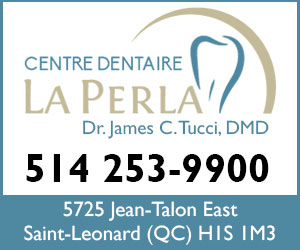A mouth ulcer is the loss or erosion of part of the delicate tissue that lines the inside of the mouth (mucous membrane). Some of the causes include certain drugs, chemicals and infectious diseases such as herpes or thrush. The most common cause is mechanical injury, such as accidentally biting your cheek. In most cases, mouth ulcers are harmless and resolve by themselves in a few days without the need for medical treatment. Aphthous ulcers are recurring ulcers with no known cause that affect around 20 per cent of the population.
Mouth ulcers generally start off with a burning feeling at a specific spot in the mouth. A blister eventually appears at the same spot and turn into a reddish spot or a slight buildup with it’s top broken off. It then slowly turns into an open ulcer, that looks like a white oval with a red border (that’s the inflammation). The white or yellow color inside is the result of layers of fibrin that form around the ulcer. Sometimes a white circle can also be seen around the lesion (called halo by some people).
Mouth ulcers are very common. Mouth ulcers are painful, annoying and sometimes embarrassing. They are red breaks in the lining of your mouth. The pain is caused by the nerves just below the surface of the lining of the mouth becoming exposed. Luckily most mouth ulcers are easy to treat.
Causes of mouth ulcers
There are many processes which can lead to ulceration of the oral tissues. In some cases they are caused by an overreaction by the body’s own immune system.
The tongue, gums or mouth lining can be affected. Crops of these tiny off-white ulcers tend to sprout during times of emotional stress or the menstrual period.
Most common in teens stress related mouth ulcers will heal within a couple of weeks. Prevention is by resolving stress related problems or using stress busting relaxation strategies.
Changes in hormone levels. Some women find that mouth ulcers occur just before their period. In some women, the ulcers only develop after the menopause.
It is not yet fully understood what causes mouth ulcers. They do not appear to be caused by bacteria or viruses and are not infectious or contagious. Genetic studies have shown that a susceptibility to them can be inherited, therefore family members sometimes share the condition.
Treatment of mouth ulcers
The goal of treatment is relief of symptoms. The cause, if known, should be treated. Gentle, thorough oral hygiene may relieve some of the symptoms. Topical (rubbed on) antihistamines, antacids, corticosteroids, or other soothing preparations may be recommended for applying on top of the ulcer. Avoid hot or spicy foods, which often increase the pain of mouth ulcers.
Some people benefit from using the over-the-counter topical gel Bonjela, which contains choline salicylate — choline salicylate is a local analgesic that helps to reduce the pain and inflammation associated with oral ulcers.
Steroid lozenges may also reduce the pain, and may help ulcers to heal more quickly. By using your tongue you can keep a lozenge in contact with an ulcer until the lozenge dissolves. A steroid lozenge works best the sooner it is started once an ulcer erupts. If used early, it may ‘nip it in the bud’, and prevent an ulcer from fully erupting.
Rinsing with antiseptic mouthwash or warm salt water may ease the pain. Similarly, take care not to eat anything with sharp edges, such as crisps, as they may scrape against the ulcers causing discomfort and pain.














Leave a Reply